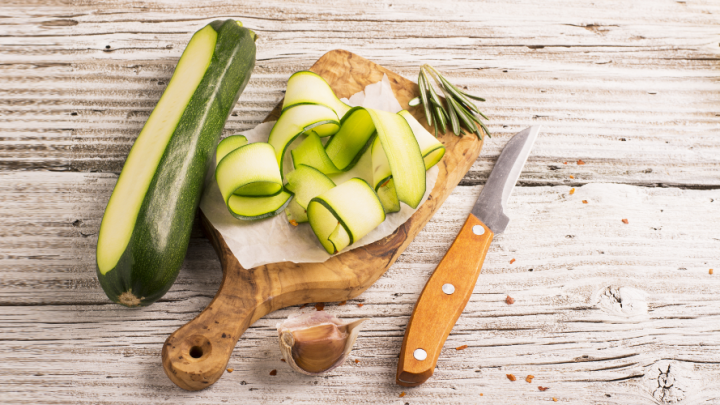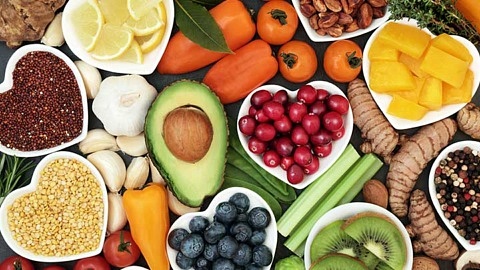The liver is an organ located within the abdomen, weighing approximately 3 lbs. This vital organ is part of the digestive system. Although there are many...
Celiac Disease Awareness and Gluten-free Alternatives
Celiac disease is a serious, genetic autoimmune condition that is estimated to affect approximately 1 in 133 North Americans. Sadly, approximately 83% of celiac sufferers go either undiagnosed or misdiagnosed with the wrong condition.
People with celiac disease are unable to digest gluten – the protein found in wheat, barley, and rye – leading to damage of the small intestine that results in malabsorption of nutrients vital to health.
If left untreated, celiac disease can lead to further health complications including infertility, osteoporosis, migraines, depression, rheumatoid arthritis, type 1 diabetes, thyroid disease, and multiple sclerosis.
The only treatment for celiac disease is adopting a 100% gluten-free diet.
May marks Celiac Disease Awareness Month. Accurate diagnosis along with comprehensive education is imperative for the prevention and management of the health consequences that can ensue if a strict gluten-free diet is not adhered to.
If celiac disease is suspected, it’s important to avoid going gluten-free until after you’ve been tested since avoidance of gluten can interfere with a correct diagnosis.
5 Common Hidden Sources of Gluten
When adopting a gluten-free diet you must avoid all food products containing wheat, barley, and rye, along with any ingredients derived from these grains, including malt and brewer’s yeast.
When it comes to buying packaged goods, here are some foods to watch out for:
1) Sauces, Gravies, and Dressings
Often wheat flour is added to thicken up gravies and sauces, and it’s not uncommon to find malt vinegar and soy sauce (made with wheat) added to many condiments.
Alternatives: Instead of using soy sauce which is usually made from wheat; look for a wheat-free tamari to use in its place. Skip the bottled salad dressings and make your own from scratch using extra virgin olive oil, lemon juice or apple cider vinegar, garlic, and herbs.
2) Granola and Snack Bars
Many granola mixtures and snack bars contain malt extract or flavoring, and many manufacturers don’t use gluten-free oats.
Alternatives: Although oats are technically a gluten-free grain, many oats come into contact with gluten-containing grains during processing. When shopping for oats, only buy prepackaged ones that are labeled gluten-free, and avoid buying them from bulk bins. Look for snack bars labeled gluten-free or make them yourself at home.
3) Soups
Barley and noodles are common gluten-containing ingredients found in soup. Not so obvious though are the ingredients that make up the soup stock or base. Often flour is used to thicken up cream-based soups, and many packaged bouillon cubes and broths contain gluten-containing ingredients as well.
Alternatives: Make your own soup stocks from scratch, or buy prepared ones labeled gluten-free. Look for noodles made from rice, beans, quinoa, or buckwheat, or make your own noodles from zucchini and spaghetti squash. When purchasing noodles, just be sure to read labels carefully to make sure that the flour isn’t mixed or “cut” with a gluten-containing flour.
4) Processed Meats/Deli Meats
Meatloaf, sausages, hot dogs, and ground meat mixtures often contain wheat-based fillers; and hamburger patties and meatballs often contain breadcrumbs for binding and texture. Some deli-meats are pre-seasoned with ingredients that could contain wheat, and even if they are gluten-free, they may have come in contact with gluten via the meat slicer.
Alternatives: Only buy ground meat or burgers labeled 100% beef. Make your own burgers and meatballs from scratch (you can always use non-gluten containing breadcrumbs if necessary). Avoid deli meats unless they’re from a trusted source and you’re positive they’re gluten-free. When in doubt always avoid it!
5) Vegetarian Meat Alternatives
A common ingredient found in veggie burgers and other imitation meat products is seitan, otherwise known as wheat gluten. Similar to processed meats, these foods often contain binders such as flour or breadcrumbs. While tofu and tempeh in their unadulterated form are naturally gluten-free, often restaurants will marinate them in soy sauce containing wheat, or in the case of tofu, deep-fry it in a gluten-containing batter.
Alternatives: Make your own veggie burgers from scratch and look for tofu and tempeh in its original form and marinate it yourself. If it contains seasoning or flavoring just ensure that the label states that it’s gluten-free.
Lastly, always remember that it’s best to build your diet around whole foods that are naturally gluten-free such as vegetables, fruits, legumes, eggs, fish, poultry, meat, nuts/seeds, and dairy (if tolerated), and then temper it with some gluten-free packaged foods to add variety.
Sources:
http://www.cmaj.ca/content/185/1/60
https://celiac.org/
http://www.beyondceliac.org/
Related Posts
The start of a new year provides the
opportunity for change and setting new goals. The most common resolutions made
on January 1st are losing weight, eating...
Living a healthy lifestyle is not always easy. If it were a piece of cake, we wouldn’t have massive amounts of people stressing out about that piece of cake...
The start of a new year provides the opportunity for change and setting new goals. The most common resolutions made on January 1st are losing weight, eating...
Living a healthy lifestyle is not always easy. If it were a piece of cake, we wouldn’t have massive amounts of people stressing out about that piece of cake...
Categories
- Allergy Relief
- Bell Lifestyle News
- Brain and Vision Health
- Depression
- Digestive Health
- Eating Healthy
- Energy Boosts
- Fitness
- Foods for Energy
- Heart and Lung Health
- Herbs
- Immune System Support
- Lifestyle
- Men's Health
- Mental
- Motivation
- Natural Remedies
- Nutrition
- Pain Relief
- Physical
- Recipes
- Relationships
- Sexual Health
- Skin and Hair Health
- Sleep Health
- Social
- Stress Relief
- Uncategorised
- Videos
- Weight Management
- Women's Health
- Your Wellness Now
Follow us on Twitter
#90 Bladder One for Women™ is a convenient one-a-day capsule for urinary tract health, featuring herbal extracts in… twitter.com/i/web/status/1…
May 2023Urinary tract infections - UTI: To treat or prevent? That is the question. Find out more about causes and treatme… twitter.com/i/web/status/1…
May 2023"How you feel is very important to how you look. Healthy equals beautiful." - Victoria Principal #womenshealth https://t.co/OPShoEbOXb
May 2023
© Copyright 2024. All rights reserved.




